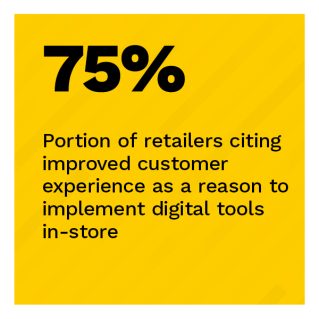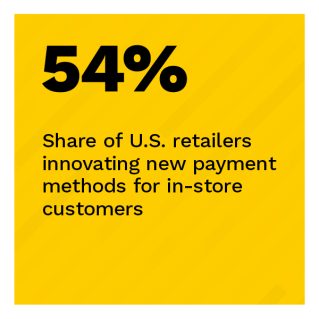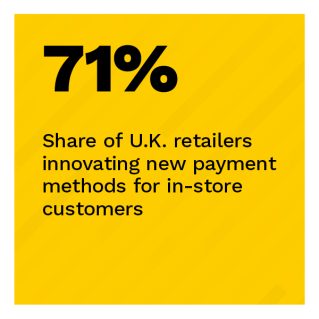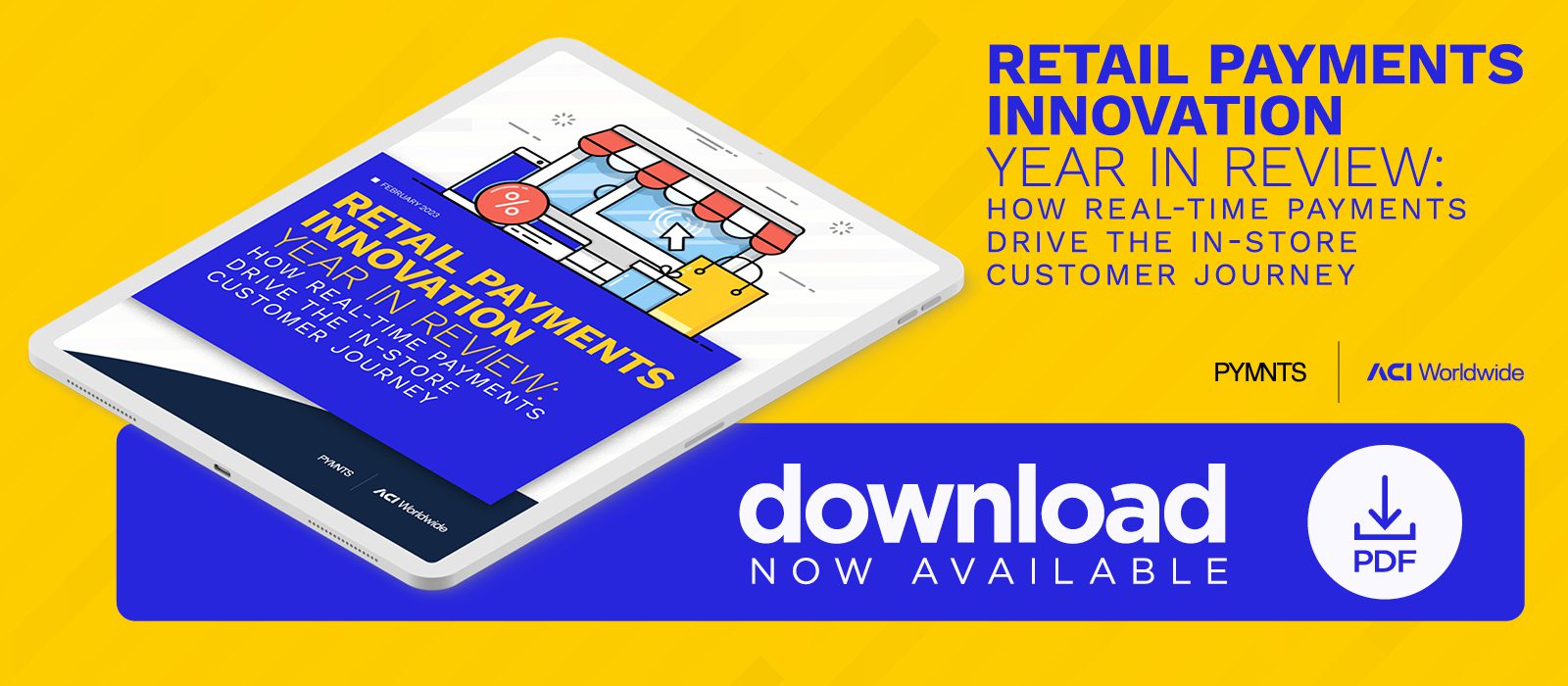UK Retailers Lead US Counterparts in Adopting In-Store Payments Innovations
Brick-and-mortar retailers in the United States and the United Kingdom faced stiff competition in 2022 as consumers continued to shop online for everything from essential groceries and health products to discretionary goods and services. The result: Innovation in real-time payment options and omnichannel marketing — strengths of eCommerce — are now mandatory for these stores.
Retailers’ innovation plans for the next three years center on bringing the speed and transparency of online shopping to in-store experiences, and real-time payments are central to that strategy. Both U.S. and U.K. retailers are working to adopt real-time payment options. Just 2.6% of U.S. retailers and 6% of U.K. retailers said they want to improve support for real-time payments, but 33% of U.S. and 43% of U.K. retailers reported they want to add real-time payments options. PYMNTS’ research also finds that loyalty programs are intrinsically linked to real-time payments for many retailers, enabling ongoing customer engagement right at the point of sale.
“Retail Payments Innovation Year in Review: How Real-Time Payments Drive the In-Store Customer Journey,” a PYMNTS and ACI Worldwide collaboration, examines how retailers implement new payment strategies to maintain customer loyalty and increase engagement. For this report, we surveyed 300 retailers in the U.S. or the U.K. about the digital tools and technologies they currently use and their future innovation plans.
Some of the key findings from the report include the following:
• In 2022, more than half of retailers innovated available payment methods, and nearly half focused current innovations on omnichannel marketing, such as by tracking purchasing history and engaging in data analytics.
PYMNTS’ research finds that in 2022, U.S. and U.K. retailers were likely to already be innovating available payment methods. U.K. retailers are ahead of the game, with 71% currently innovating and 12% planning to do so. In the U.S., 54% of retailers are currently innovating, and just 9% are planning to in the next 12 months. Tracking consumers’ purchasing data was a shared focus, with 48% of both U.S. and U.K. retailers having already launched innovations in this area.
• Retailers are taking insights from tracked customer shopping and payments data to develop engagement strategies and streamline payment processes to align with consumer preferences.
Significant shares of U.S. and U.K. retailers are interested in leveraging payments innovation, such as those involving data tracking and analytics, with 64% of U.S. retailers and 58% of U.K. retailers interested in using these innovations to attract new customers. In addition, 62% of U.S. retailers and 64% of U.K. retailers want to use these solutions to improve customer retention. Three-quarters of all retailers cited improved customer experience as a reason to implement digital in-store tools, while 31% said it was the most important reason.
• Data security and fraud detection were important areas of innovation for U.S. and U.K. retailers in 2022.
Approximately 40% of both U.S. and U.K. retailers reported currently innovating around data security. A similar share of U.K. retailers, 39%, plan to innovate in the next 12 months. More than half of U.K. retailers are already engaged in fraud detection innovation, and 18% plan to innovate. In the U.S., 37% of retailers have introduced these innovations, and 37% have innovation plans.
To learn more about how retailers are innovating real-time payments to optimize in-store customer experiences and build shopper loyalty, download the report.
